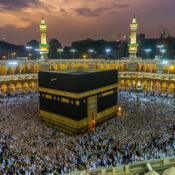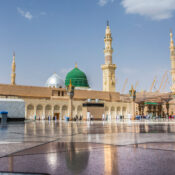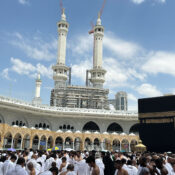
Tawaf: A Guide to Doing It Correctly
The many rituals performed during Hajj and Umrah, Tawaf stands out as one of the most profound acts of worship. Pilgrims from across the world gather around the Kaabah in Makkah, moving in unison and devotion, circling the House of Allah in deep submission. This sacred ritual is not merely a physical act but a spiritual journey that renews faith, strengthens unity, and connects the believer directly with their Creator.
What is Tawaf?
The word Tawaf comes from the Arabic verb Taafa, which means “to circle around something.” In Islamic practice, it refers to circling the Kaabah seven times in a counter-clockwise direction, starting and ending at the Black Stone (Hajar al-Aswad). Each circuit is called a Shawt, and seven Shawts complete one Tawaf.
Tawaf is performed as part of both Hajj and Umrah, symbolizing the believer’s obedience, humility, and longing for closeness to Allah.
Types of Tawaf
There are different forms of Tawaf, each with a specific purpose:
- Tawaful Qudum (Arrival Tawaf) – Performed by pilgrims upon arriving at Masjid al-Haram for Hajj al-Ifrad or Hajj al-Qiran.
- Tawafuz Ziyarah / Tawaf al-Ifadah – The essential Tawaf during Hajj, without which the pilgrimage is incomplete.
- Tawaful Wada (Farewell Tawaf) – Performed before leaving Makkah, marking the conclusion of Hajj.
- Tawaful Umrah – A mandatory part of Umrah pilgrimage.
- Tawaful Nadhr – Performed to fulfill a vow made to Allah.
- Tawaful Tahiyyah – A recommended (non-obligatory) Tawaf as a respectful greeting upon entering Masjid al-Haram.
Rules for Performing Tawaf
To maintain the sanctity of Tawaf, pilgrims should observe the following rules:
- Be in a State of Wudu: Ritual purity is required.
- Make Niyyah (Intention): Begin with sincere intention for Allah’s sake.
- Start at Hajar al-Aswad: Face the Black Stone; touch or gesture toward it if possible.
- Complete Seven Circuits: Move counter-clockwise, staying focused on dhikr (remembrance of Allah).
- Maintain Respectful Conduct: Avoid idle talk; focus on worship and humility.
The starting point of Tawaf is marked with a green light facing the Kaabah, guiding pilgrims to begin each circuit in the same place.
Spiritual Purpose of Tawaf
Tawaf is far more than walking around a sacred structure. It is a reminder of the cosmic order created by Allah — just as planets orbit the sun and electrons revolve around the nucleus, Muslims circle the Kaabah, symbolizing the divine center of their faith.
This act reflects:
- Unity: Millions of Muslims moving as one body in perfect synchronization.
- Submission: Acknowledging that all power and guidance come from Allah.
- Renewal: An opportunity to cleanse the heart, seek forgiveness, and strengthen faith.
Significance of Seven Circuits
The number seven holds great spiritual meaning in Islam. From the seven skies mentioned in the Qur’an to the seven rounds of Sa’i between Safa and Marwah, the number represents divine order and completeness. Completing seven circuits in Tawaf symbolizes wholeness in worship and balance in a believer’s spiritual journey.
Tawaf Without Ihram
While Ihram is necessary for Tawaf during Hajj and Umrah, some forms like Tawaful Tahiyyah can be performed without Ihram. However, performing Tawaf in a state of Wudu is always mandatory, reflecting the emphasis Islam places on purity.
Reflecting on Tawaf’s Importance
The Prophet Muhammad (peace be upon him) described Tawaf as an act similar to Salah, except that talking is permitted — provided it is meaningful and respectful. This highlights the seriousness and sacredness of the ritual.
As believers move in circles around the Kaabah, they are reminded that their lives, too, should revolve around the worship of Allah. Every circuit becomes a step away from sins and a step closer to spiritual clarity and peace.
Tawaf is not just a ritual of movement but a journey of the soul. It embodies humility, devotion, and complete surrender to Allah. For the pilgrim, each circuit is an act of love, each glance at the Kaabah a reminder of divine majesty, and each completed Tawaf a milestone in spiritual growth.
Whether performed as part of Hajj, Umrah, or voluntarily, Tawaf remains a timeless reminder that the heart of a believer must always revolve around Allah. It is a journey around the Kaabah — but more importantly, a journey inward, toward purity, faith, and everlasting peace.







